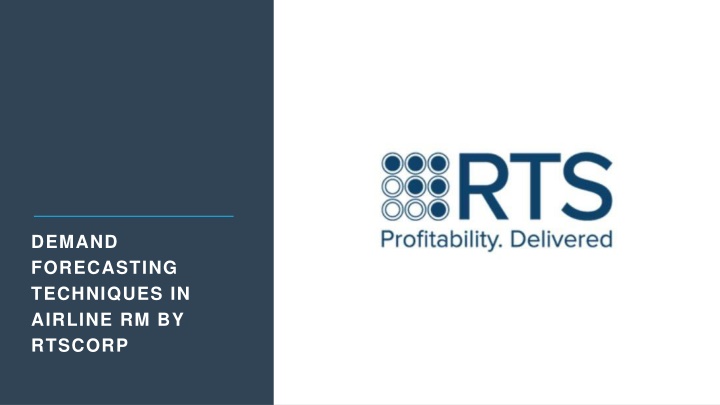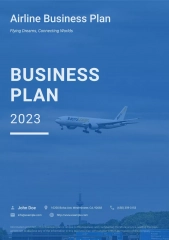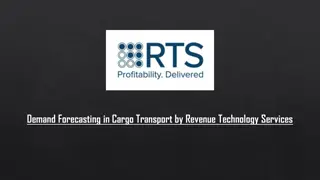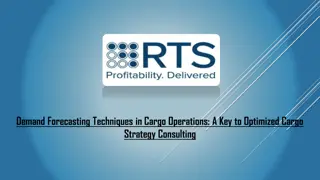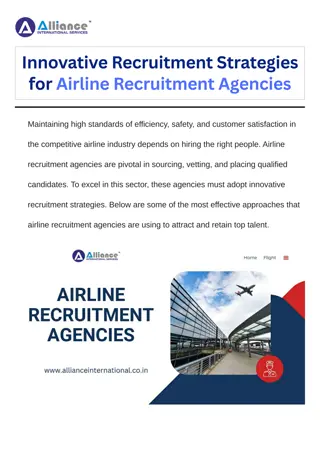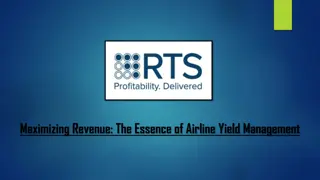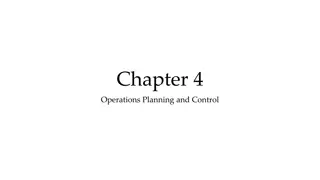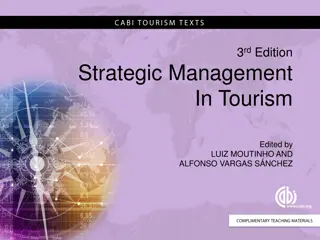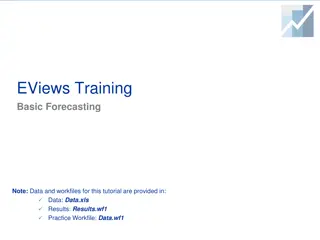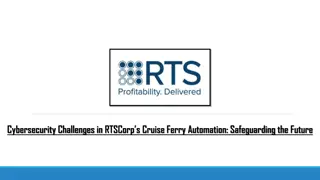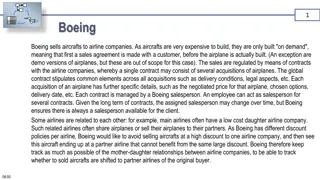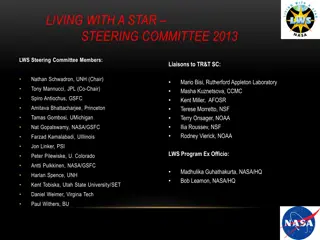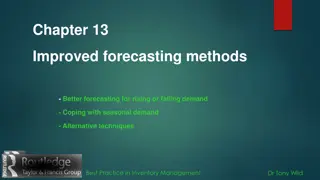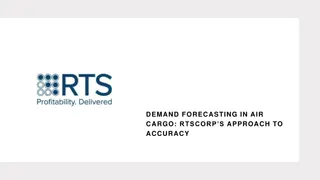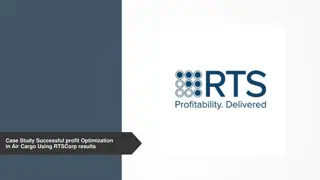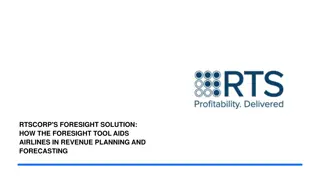Demand Forecasting Techniques in Airline RM by RTSCorp
In the fast-paced world of aviation, where ticket prices change by the minute and customer behavior is increasingly dynamic, accurate demand forecasting is crucial. RTSCorp, a leader in airline revenue management (RM) solutions, is at the forefront o
Download Presentation

Please find below an Image/Link to download the presentation.
The content on the website is provided AS IS for your information and personal use only. It may not be sold, licensed, or shared on other websites without obtaining consent from the author.If you encounter any issues during the download, it is possible that the publisher has removed the file from their server.
You are allowed to download the files provided on this website for personal or commercial use, subject to the condition that they are used lawfully. All files are the property of their respective owners.
The content on the website is provided AS IS for your information and personal use only. It may not be sold, licensed, or shared on other websites without obtaining consent from the author.
E N D
Presentation Transcript
DEMAND FORECASTING TECHNIQUES IN AIRLINE RM BY RTSCORP
In the fast-paced world of aviation, where ticket prices change by the minute and customer behavior is increasingly dynamic, accurate demand forecasting is crucial. RTSCorp, a leader in airline revenue management (RM) solutions, is at the forefront of deploying advanced demand forecasting techniques that empower airlines to make data- driven decisions and optimize profitability. At the heart of effective airline yield management lies the ability to predict future demand with precision. Demand forecasting enables airlines to allocate the right number of seats to different fare classes, adjust pricing strategies in real time, and maximize revenue on each flight. RTSCorp approaches this challenge with a combination of traditional statistical models and cutting-edge machine learning algorithms. One of the foundational techniques used by RTSCorp is time series analysis, which helps airlines understand historical booking patterns. By analyzing trends, seasonality, and cyclic behavior in booking data, time series models can project future demand with reasonable accuracy. This is particularly valuable for routes with stable historical data, where patterns tend to repeat over time. To enhance accuracy, RTSCorp integrates regression models that factor in variables such as pricing, competitor behavior, market events, and economic indicators. These models provide deeper insights into how external factors influence demand, enabling airlines to respond proactively to market changes.
In recent years, RTSCorp has embraced machine learning to take forecasting to the next level. Techniques such as random forests, neural networks, and gradient boosting models allow for pattern recognition in complex and non-linear datasets. These models continuously learn from new data, adapt to changing market dynamics, and reduce the margin of error in forecasts. Another important tool in RTSCorp s magazine is choice modeling, which simulates client geste by assaying how passengers make copping opinions grounded on chow class, timing, and available druthers . This helps airlines anticipate demand shifts, knitter immolations, and fine- tune force control. What sets RTSCorp apart is its ability to blend these techniques into a cohesive forecasting engine tailored to each airline s unique network and strategy. By combining historical insights with real-time data streams, RTSCorp supports a dynamic approach to airline yield management one that is both reactive and predictive. In conclusion, demand forecasting is not just a technical exercise; it is a strategic necessity in modern airline yield management. RTSCorp's innovative use of statistical and machine learning methods helps airlines stay ahead of demand curves, optimize pricing, and drive sustainable revenue growth in a highly competitive market. As passenger expectations evolve and markets fluctuate, intelligent forecasting will continue to be a key differentiator for airlines seeking long-term success.
